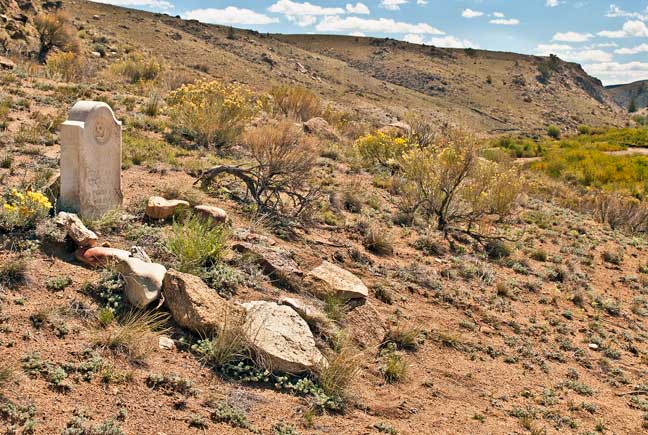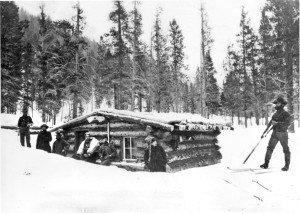by Christopher James
Note: The following is an excerpt from Silver Rails – The Railroads of Leadville, Colorado, published by Sierra Grande Press. www.silverrailsleadville.com.

One of the many mysteries that still eludes Leadville historians is the gravestone that stands beside the old stage road to Leadville. Look for it about fifteen miles south of town, just north of the junction of U.S. Hwy. 24 and Hwy. 82 to Aspen. With a good set of eyes or a pair of binoculars, you can see a marble monument across the Arkansas River, below a large rock outcrop. You can hike to the gravesite by crossing the Arkansas River via the Rio Grande railroad bridge and walking about a mile upstream, first on the old Colorado Midland railroad grade and then along an easy trail. The well-weathered monument reads:
My Wife – Jane Kirkham
Died March 7, 1879 Aged 38 years,
3 months, 7 days
While there were Kirkhams in the 1879 Leadville City Directory, no Jane Kirkham is listed, and the surviving Leadville newspapers from the spring of 1879 yield no clues to her identity or fate. Leadville historian Edward Blair tried to find an accurate origin of the monument without success. Nonetheless, he collected several versions of the story, none of which he could verify.
The simplest tale was that Jane Kirkham was a stage passenger who died during the journey and was buried beside the road. This seems unlikely because the stage would have been close enough to Leadville, Granite or Buena Vista to take the corpse into town for a proper burial.
[InContentAdTwo]
A second version of the story says that Kirkham was a pregnant passenger on the Leadville stage who went into labor because of the rough travel over the stage road. The coach stopped and the crew and passengers attempted to deliver the baby beside the road, but the woman died in childbirth. Again, this is an awkward place for a grave.
A third version involves a highwayman who had frequently robbed the stage at that location. After several successful robberies, the stage company assigned a deputy to ride along to protect the passengers and cargo. As the stage rounded the curve, the masked highwayman leapt out with a pistol from behind the nearby rock outcrop. The deputy drew and fired his weapon, killing the highwayman in his tracks. But when the deputy pulled off the mask of the dead highwayman, he discovered that it was not a highwayman but a highwaywoman who had been terrorizing the stage.
The final version is the most intriguing of all. When the deputy tore off the mask, he realized to his horror that not only was the bandit a woman but the bandit was also his wife!
Whatever the real story, it was buried along with Jane Kirkham in 1879.




